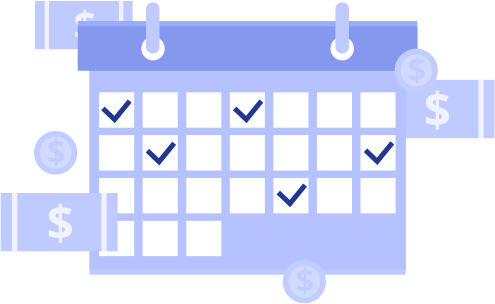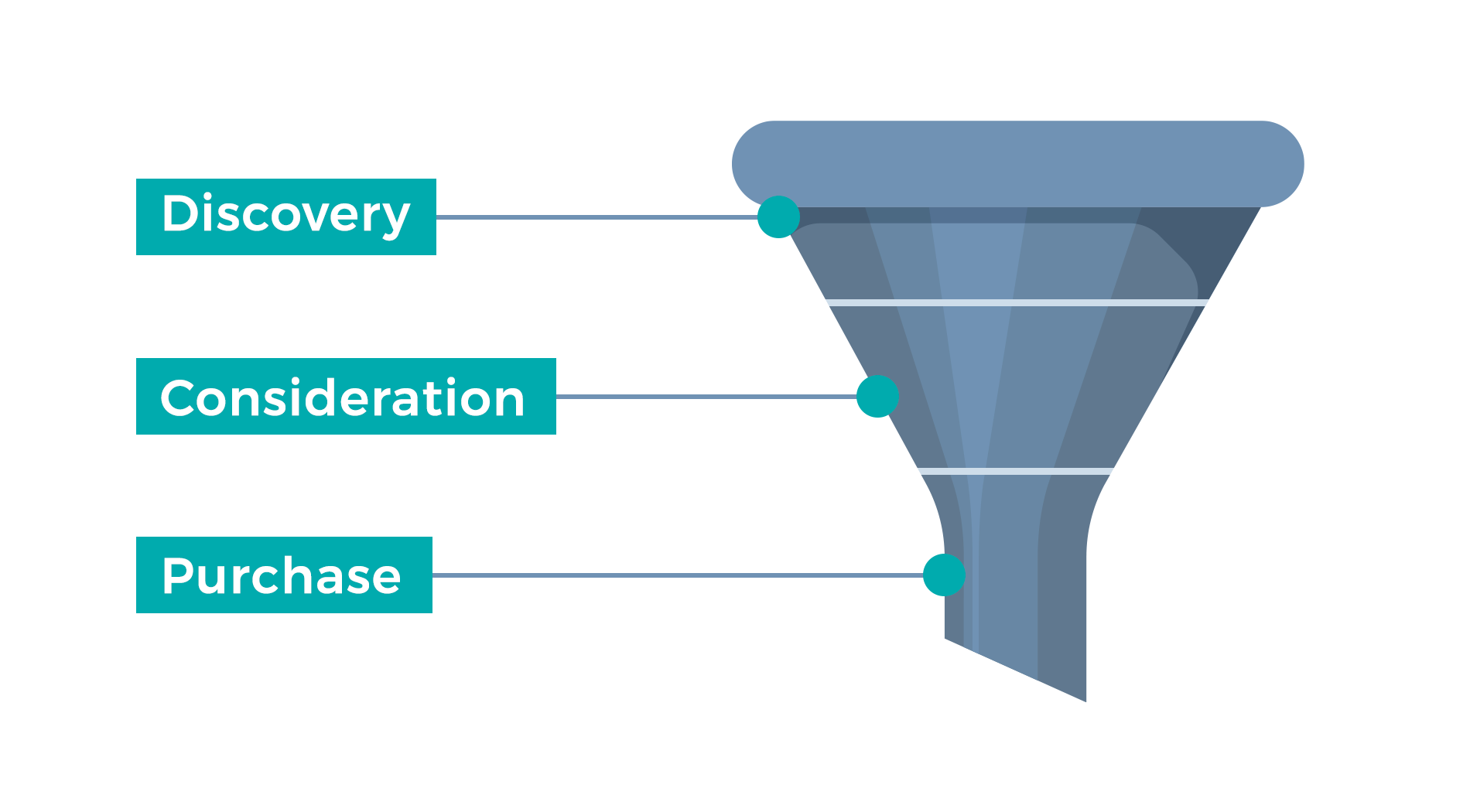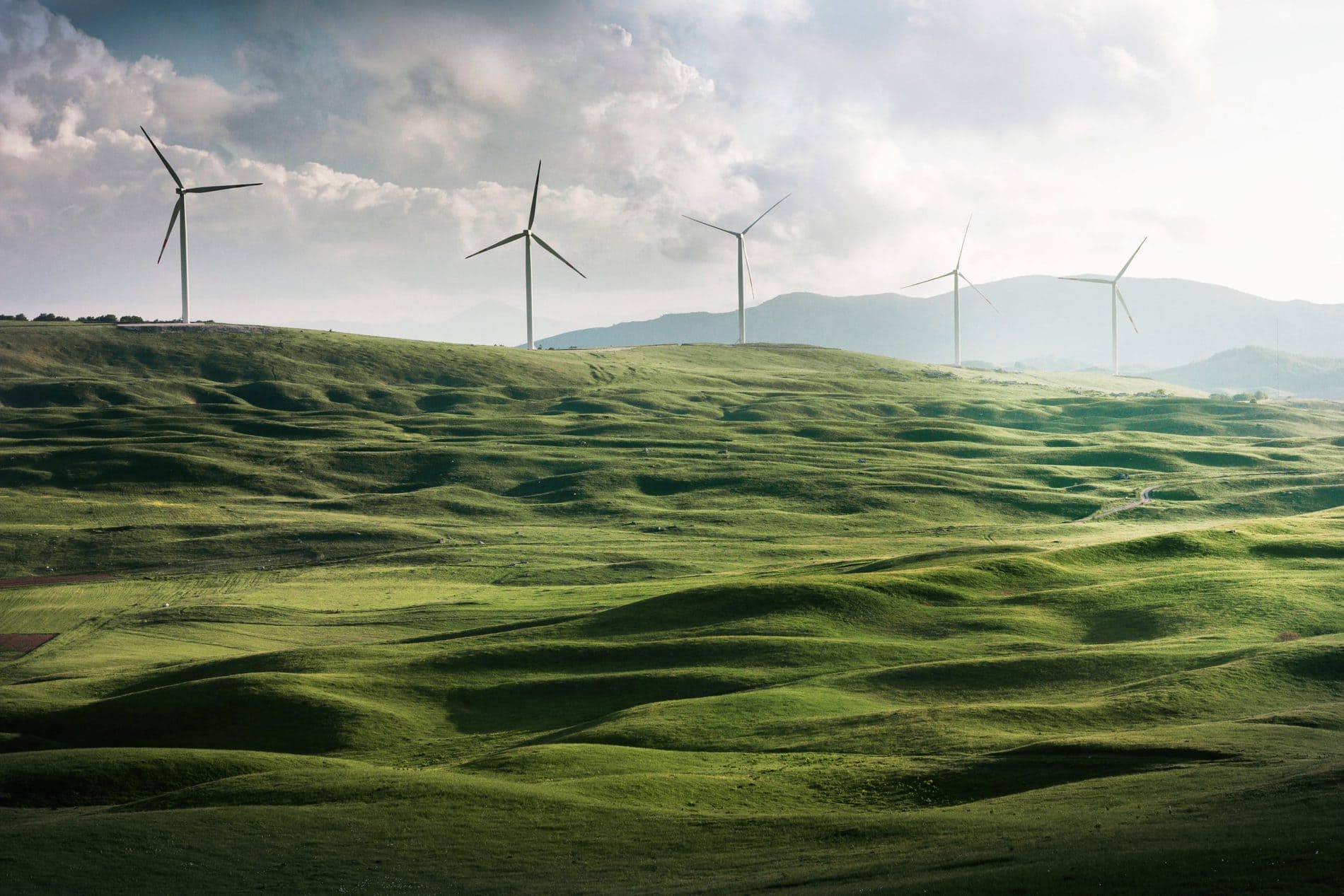The New Fundamentals of Energy Marketing
What every marketer needs to know to truly succeed
Regardless of what industry you’re in, modern marketing is complex and staying up to date on the latest fundamentals can be difficult. The energy industry’s heavily regulation, politics, and mandates dictating that you have to appeal to everyone exponentially increase the complexities. While energy marketing has its challenges it is also overflowing with opportunities to literally change our country through great marketing. This guidebook gives you what you need to know to do just that—create amazing marketing that changes our country and our relationship with energy for the better.
Enjoy!
Let's Make Sure We're Starting on the Same Page...
We’re going to start with a couple of basics about marketing and what it is so if you have a handle on that scroll down to “How Energy Marketing Is Different…”.
Learning the energy marketing trade, and staying up to speed, can take years of dedication but with some help from this guidebook, a little perseverance and smart experimentation you’ll be quickly and wildly successful!
Like a lot of things, future success starts with solid fundamentals learned today so let’s get you started properly; and if you are already in marketing we guarantee you will still pick up some great things very shortly.
Full of actionable advice you won’t learn in the classroom and would take you years to learn on your own–the coming pages cover everything you need to get started, or continue, on your journey toward being a leader in the world of energy marketing.
We’ve laid out your journey in easily digestible chunks and stripped away the unnecessary complexities so you can immediately apply what you learn and drive the results you’re looking for.
Bookmark this page for future reference, or print it, and let’s get going!
What is Marketing?
In simplest terms, marketing is the act of causing the desired customer action (purchase, subscription, volunteering, etc.).
It encompasses specific strategies and tactics used to position products and services in the marketplace in a manner that motivates the target customer to take action.
How Does Marketing Work?
Marketing has a role throughout the entire process and product lifecycle.
Take a look at how it works….





Determining the right messaging to connect with them.





How Energy Marketing Is
Different From Other Marketing
Energy marketing possesses a unique set of demands which means that, unless you’re experienced in the energy industry, you will make potentially serious errors that cost you money, time, reputation and customers. For us, the marketers at IDLab, in addition to years of energy marketing experience we’ve had the good fortune of marketing everything from the release of the Nissan 350Z, to platinum albums (Juno), to Frank Sinatra, and Levis jeans, so when we say “energy marketing is a very different beast”, we are talking from decades of first-hand experience.
Here is what you need to know to be successful in any type of energy marketing (utilities, renewable energy, solar energy, natural gas, EE, DR programs, etc.):

Speed
If you’ve marketed in any other industry or have any exposure to any other marketing, reduce your expectations of how quickly you can get to market and execute campaigns by 75 percent. This isn’t a complaint or condemnation; it’s a reality. If you try to move too fast in energy marketing you will fail, the industry is not currently built for speed so accept it. A safe minimum ratio is 3:1 – for every month of non-energy marketing, the energy industry requires three.

All Inclusive
Like any good marketing execution, the energy industry practices sound audience segmentation and targeting. However, with most energy campaigns you will have to find a way to appeal to everyone – despite your segmentation/audience prioritization. This is especially true for the utilities. State and local governments, community-based organizations, regulators, and many other actors frown on campaigns that leave some customers out – especially low-income customers.

Research

Promote, But Not Too Much
Like any good marketing execution, the energy industry practices sound audience segmentation and targeting. However, with most energy campaigns you will have to find a way to appeal to everyone – despite your segmentation/audience prioritization. This is especially true for the utilities. State and local governments, community-based organizations, regulators, and many other actors frown on campaigns that leave some customers out – especially low-income customers. Also, big campaigns can create ire amongst rate payers as they don’t like “their money” being spent on over-the-top marketing. Its a balance but always push it as far as you can toward great campaigns.

Too Much Information
The energy industry in North America is dominated by “quants” (engineers, lawyers, evaluators, etc). Their natural bias is data, education and gathering all the information available in order to make decisions. As evidence of this some utilities refer to marketing as ME&O (marketing, education and outreach). As a marketer, you will face intense pressure to include heaps of data, charts, explanations and diagrams. RESIST THIS! Remember, customers, don’t buy the “how”, they buy the “why”. Hold strong with one to three message points per tactic and layer your marketing to allow your target audience to go as deep, or not, as they like when it comes to data. Resist the pressure from the people who love numbers – they are not marketers – you’re the expert at communicating with the masses.
The 4 P's of (Energy) Marketing
For all its complexity, at its core, marketing revolves around four things: Product, Price, Promotion, and Place. Tactics and channels change, but these are the concepts everything else revolves around.

Product

Price

Promotion

Place
Understanding the Marketing Mix and the 4 P’s of Energy Marketing
Product
This is what a company sells, whether that means physical goods or services. Specific to energy, think of it this way – programs (e.g. energy audits), smart thermostats, devices that connect to the smart meter and/or products in your e-commerce marketplace.
At IDLab we encourage our clients to look at the energy and related services they provide as products (something of tangible value) versus a commodity (an ingredient that helps create value). As important as it is, this delineation is surprisingly difficult for most utilities as it requires a shift in perspective and some organizational changes. If you want to know more about how to do this, reach out to us directly and we’ll give you all of the detail you need.
For product marketing, you will need to determine the following:
- How many different product variations or lines should be sold?
- For example, basic programmable thermostat, smart thermostat, etc.
- How should they be packaged or presented?
- For example, if you sell an energy audit should the report be all digital, or be a printed document with tear-out tips?
- How will it be supported?
- This could be shortlists of contractors, post-install reports, customer service follow-ups, etc.
Marketers might even have some involvement in determining how products (e.g. home energy audits, rate structures) are designed and which features they might include (here at IDLab, for instance, marketers and product developers work in harmony to give customers exactly what they want; and what will sell).
Price
This is simply “how much the product costs” – right?
Yes, but in energy it’s not that simple. The physical goods and program pricing is straightforward but rates are not.
For non rate-related products here are some marketing considerations for pricing:
What is the market rate per unit of a product?
This requires some market analysis and competitive research to determine what’s a fair price for a product, given its cost to produce, desired profit margin, and what customers are willing to pay. Market strata is also a key consideration – do you want to position the product as the low-cost alternative, mass market, or luxury?
How should discounts be timed and applied?
You need to determine if the product can be put on sale at certain times of year and at what discount levels? Or take an EDLP (everyday low price) approach and not offer sale prices; or take an up-market approach and keep pricing high.
Does it make sense to give customers options for payments?
This is especially true for big ticket items like home (energy) automation systems, solar installs and the like. Utilities often don’t like payment plans because of having to implement nontraditional account practices like amortizing customer assets over a period of time, carrying the debt load over fiscal years, managing collections and different billing systems. As a marketer you need to push your company to embrace change because new revenue sources are vital to future success – especially for utilities.
Marketing considerations for pricing:
Sometimes marketers don’t have input or control (e.g. rates)
Rates are often so heavily regulated and scrutinized that marketers are not brought in until rates, and their names, are determined. While we could make a valid argument that this should not be the case, it’s not the purpose of this guide so let’s just deal with the current reality.
When it comes to energy rates, the key is to strip out all of the complexity, and structure the rate offering in ways that customers can relate to. One of the ways to do this is to mimic what they are used to seeing when buying other non-energy goods and services. For example, we saw one utility try to name a rate plan after the rate case (Peak Reduction +++). We led a naming exercise, named it the “EV Gold Plan” and avoided what could have been a customer nightmare. Make pricing memorable and easy to understand – think “good, better, best” when structuring your rates/prices. BTW – as a marketer its unlikely that you will be involved in rate structure but you absolutely need to take the lead in naming and communicating.
Promotion
If a product launches but no one cares, does it exist?
Well, if no one cares it shouldn’t exist and it’s just costing you money if no one’s buying it.
Promotion is the process by which a company uses the mediums at their disposal to generate customer awareness and convince them to buy their product or service.
Once a product is out there, it needs to be continuously promoted so people know it exists and the product has to evolve so customers continue to buy it as the competition catches up to you. No one is exempt from this reality – not renewable energy, not natural gas, not electricity; no one.
When it comes to promotions you have to decide these basic elements upfront:
- Which channels will be used to promote the product and what is each channel’s contribution to (unit) sales, revenue and profit? This includes online and offline channels.
- Where will it be promoted? Online? Offline? In stores? At events? Door to door?
- What message needs to be communicated? What copy and verbiage will tell audiences what the product is, what makes it special, how it will improve their lives, and encourage them to buy it? This is where you really have to defend against the quants and their too-much-data biases (no offense quants).
Place
The three rules of retail are: Location, Location, Location
“Selling” energy is a retail exercise so the three rules apply to you too.
Place is simply where you offer/distribute your product or service for sale (e.g. retail store, online store, web site, popup store)
The right product needs to be in the right place for people to find it and buy it. And yes, this applies to energy products and services. If you’re manufacturing consumer products in the energy space this is obvious. However, it may be less obvious if you are working at a utility.
Here is an example for those of you in utilities – EV (electric vehicles). Where do you think it’s better for you to be in the purchase funnel?
1) At the first consumer touchpoint (EV web sites and dealerships) when they are thinking about buying an EV, and are doing their research, or
2) After they have purchased it and are looking to save money on electricity (post-purchase).
If you are placed too late in the purchase funnel (e.g. post purchase) you don’t get the brand awareness and equity you need to thrive – you become a commodity. Here are the things to consider:
- Where is the product distributed? Online? Offline?
- Will specific locations get the product? For example, if you have retail outlets or pop-up stores across a service area, which outlets will get what products (e.g. avoid trying to sell high-end home energy management/automation systems in low income areas).
- Where are you going to get the highest return on your investment (e.g. sales per square foot for physical stores or conversion rate for online stores)?
The Foundational 8 - Essential Marketing Channels
Content Marketing
Email Marketing
Social Media Marketing
Online Video Marketing
Advertising and Pay-Per-Click (PPC)
Search Engine Optimization
Public Relations
Influencer Marketing
1. Content Marketing
“Content is King!” This is as true today as it was when the web first launched. Why? People want to be helped and informed more than they want to be sold and interrupted. Also, if you don’t have content, if it’s not optimized, or you’re not promoting it, Google will ignore you and you will all but cease to exist. Don’t believe us? Try making your digital presence “no index” for a few days and see the consequences of Google not “seeing” you.
Content marketing involves the creation and sharing of online material (such as videos, blogs, and social media posts) that normally doesn’t explicitly promote a brand, but is intended to stimulate interest in a brand’s products or services. And yes, social media is an integral part of content marketing.
Content achieves a few important goals:
- Builds trust with your audience – you become the trusted subject matter expert.
- Improves brand perception (think JD Power scores).
- Improves conversions – information breeds trust and trust breeds sales.
- Makes a tangible and lasting connection with customers – retention marketing is less expensive than acquisition marketing.
- Generates leads and sales.
- Establishes authority – brand and web site domain authority
Want to know more details about content marketing from an unbiased source? You can visit the Content Marketing Institute.
2. Email Marketing
When it comes to driving conversions and loyalty, it’s almost impossible to beat the return on investment (ROI) of email marketing. There are differing opinions on the ROI but it’s generally accepted that it drives 3,800% to 4,200% ROI (meaning that for every dollar spent, it produces $38 to $42 in revenue).
To get yourself organized to take full advantage of email marketing, divide your emails into these categories:
- Welcome Emails
- Email Newsletters
- Dedicated Emails
- Lead Nurturing Emails
- Sponsorship Emails
- Transactional Emails
- Re-Engagement Emails
- Brand Story Emails
Here are five important elements for great email marketing for energy marketers:
- Get personal – use the recipient’s name and make your offer enticing to their specific needs/wants.
- The right perspective – promotions aren’t everything. Promotions are not the core of email marketing; establishing and nurturing healthy relationships is.
- Automation – spend the money on email automation and invest the time to master the tools. This reduces the time required by you to effectively use the channel, increases conversion rates, improves efficiency and enables scalability (e.g. MailChimp, Salesforce).
- Segment – group customers who have certain attributes in common to map the customer’s journey, create personalized content and increase relevance… which decreases unsubs.
- A/B test – it’s a simple thing to do and is available with any good email solutions platform. If nothing else, test your subject lines and keep the variables down to one or two max per test for simplicity.
Udemy offers some great and inexpensive email marketing courses.
Note: While email is still effective with Millennials and younger it is somewhat diminished. You need to include text and chat into your channel mix now. Most utilities are not equipped for this but all need to start building it today and be ready within the next 24 months to remain effective.
3. Social Media Marketing
Organic reach is declining on popular social media platforms like Twitter and Facebook, but increasing on Instagram and TikTok so social media marketing is far from dead. It’s effective for building brand awareness, developing community, and getting your content and products in front of new people. Most utilities use Twitter for real time alerts and time-sensitive communications but most don’t use social media effectively to build affinity; this is where the big opportunity lies for energy marketers. At its core, social media marketing is the use of social media platforms to connect with audiences to build your brand, increase sales, and drive website traffic. As a side note, Facebook converts to sales well; Instagram less so.
Here are 10 tips for success:
- Bypass ‘Leaky’ Landing Pages – Take the time to create a great landing page (we like Instapage).
- Leverage the Power of Life Events – these are parameter options when setting up your campaigns.
- Provide a Seamless, Cohesive Visual Experience – design things that are appealing and harmonized with the landing page.
- Build Communities Around Actionable Hashtags – e.g. #lifeofalineman.
- Structure Social Campaigns Around Your Business Objectives – the platforms offer a choice of objectives; use them.
- Use Twitter To Test Out Content Ideas – use the platform as a “content lab” to test how well-received a piece of content is.
- Use Your Best-Converting Ad Copy in Your Social Campaigns – increase your Relevance Score or Quality Adjusted Bid – and with that the visibility and CTR of your ads – by using the best-converting ad copy from your PPC (pay per click) ads in your social campaigns.
- Narrow Your Targeting to Boost Engagement and Reduce Costs – the lower your social media engagement rate, the more you’ll pay for poorly-performing ads so narrow the focus of your targeting to increase engagement.
- Take Followers Behind the Scenes With Stories – consumers have told us that they turn to social media when they want to engage with the brands they love and/or what to know more about. Giving your loyal followers an exclusive inside peek at how your business operates (and, perhaps more importantly, who makes your business operate) is a fantastic way to make them feel like they’re part of a group.
- Start Remarketing on Social – Users don’t see an ad, click through immediately, and buy or sign up for whatever is offered. You need at least 7 “touches”. Remarketing increases touches so you’re not putting all your time, money, and effort into a single opportunity to convert your prospects, which is every bit as crazy as it sounds.
4. Online Video Marketing
Did you know that over 400 hours of video are uploaded to YouTube every minute? It is now the world’s second-largest search engine (second only to Google, which owns YouTube, and even bigger than Bing and Yahoo combined). Video marketing is the use of video content to reach your desired audience and promote your brand, service, or product.
Here are 5 tips for great video marketing:
- Tell a story, don’t be salesy – focus on adding value to your customer’s lives by providing actionable advice.
- Make the first 6 & 10 seconds count – in the first 6 seconds customers will decide to watch more or not; they demand relevant content within 10 seconds or they will click away.
- Include closed captions – 85% of videos on social platforms are watched without sound so get your message across with captions.
- Optimize your video for search – closed captioning helps here too; plus relevant keywords in the title and comprehensive description. Where space allows, also include a transcript.
- End with a call-to-action (CTA) – KISSmetrics found that, adding a single CTA within a video generates as much as 380% more clicks than a CTA on the sidebar of the same page.
5. Advertising and Pay-Per-Click (PPC)
Have you ever seen those ads at the top of search results? Those are pay-per-click (PPC) ads. PPC is an online advertising model in which you pay each time a user clicks on one of your online ads. All of these searches trigger pay-per-click ads. In pay-per-click advertising, you are only charged when a user actually clicks on your ad, hence the name “pay-per-click.”
PPC advertising offers marketers the opportunity to sell products directly to searchers. It’s also great because it makes it possible to see exactly how much you’re spending vs. how much revenue your advertising efforts are generating.
Here are 5 tips for great PPC advertising:
- Build A Strong Account Structure – start with 5-10 primary keywords, set up ad groups for 5 of your “best sellers”, start with 4 campaigns and 3 ad groups; and build from there.
- Focus on High-Performance PPC Keywords – click-through rate and conversions are usually the top metrics to start with; then structure your bidding like this (as of the date of this document):
- Build Out Negative Keyword Lists – this reduces costs and improves results (especially when using broader match types!).
• Exact: $6 CPC
• Phrase: $5.75 CPC
• Modified Broad: $5.50 CPC
• Broad: $5 CPC - Pause Keywords with Poor Performance – low clicks and CTR (click thru rate).
- Optimize Ads & Create New Ad Text – regularly test your ad copy to improve PPC performance.
6. Search Engine Optimization (SEO)
Few, if any, tactics or channels drive more traffic on average than search engine optimization.
SEO is the practice of increasing the quantity and quality of traffic to your website through organic search engine results. SEO improves your site’s search engine rankings, pulling in an audience that’s interested in the topics your site covers, and the products your company sells.
Here are 5 tips for great SEO:
- Remove Anything that Slows Down Your Site – Google has put more emphasis on its Core Vitals to rank highly on its Search Engine Results Page (SERP).
- Link to Other Websites with Relevant Content – Linking out sends trackable traffic, it makes your site a more valuable and scalable resource.
- Write for Humans First, Search Engines Second – don’t let your SEO score diminish the quality of the writing/content
- Encourage Other Trustworthy Sites to Link to You – To a large extent, inbound links are still the lifeblood of search engine rankings.
- Write Unique and Relevant Meta Descriptions for Every Page – One of the most important SEO tips that most people neglect is the well-crafted meta description. The meta description is the first thing that people see when Google serves up your page to search users.
Pro Tip: Use tools like Surfer for on-page optimization.
Speed Matters
For a website that takes more than 3 seconds to load…
Of visitors will abandon a website
Those who document processes are
1-SECOND
DELAY
IN PAGE
LOAD TIME
In Dollar Terms
This means that your site typically earns $100,000 a day,
this year you could lose $2.5 Million in Sales.
7. Public Relations
Even in an era with new marketing options appearing almost daily, tried-and-true relationship-building remains essential for effective marketing. PR is all about managing perceptions and relationships; ensuring people hold a positive perception about your brand – essentially managing the narrative about your brand.
Here are 5 tips for great energy-focused PR:
- Build relationships with journalists; focus locally – PR professionals unfamiliar with energy will often start with a national basis – don’t let them. Local journalists/reporters, opinion leaders and officials are the first to target.
- Use social media to your advantage – Share real-time information and let PR focus on brand personality, crisis messaging and relationship building (less on product/program promotion).
- Write good news stories/release – Don’t bury the lead! Follow the AP style guides, be concise and most importantly tell a story – don’t be too mechanical and purely fact oriented unless it’s a crisis or damaging allegation. Write the release for your target publication’s audience, everyone likes a great story no matter the context or channel.
- Use testimonials – Third-party validation and corroboration are many times more powerful than proclamations that will be seen as self serving. Customers, influencers and local heroes are great for this purpose.
- Don’t let your PR people/Agency off the SEO hook – Too often we hear PR people and agencies say “SEO really isn’t important to the materials (press releases) we create.” BULL. If it’s searchable, indexable or tagged in any way SEO is critical so make sure everything is optimized to rank well.
8. Influencer Marketing
Influencer marketing is the process of using external content creators, or influencers, to advocate and promote your brand’s message, product and/or service. Influencers present their content to their audience in ways that endorse your brand (e.g. testimonial, review, sponsorship announcement) with the objectives of increasing brand awareness, sales and/or positioning.
Here are 5 tips to succeed in using influencer marketing in energy:
- Don’t underestimate micro influencers – these are influencers with audiences under 60,000 “followers”. They often have a more intimate connection with their audience and are less expensive. This isn’t to say don’t use the big influencers – just don’t overlook the small ones.
- If you’re a utility stay local – National influencers have a big audience but your audience will reach too many people that don’t care about you and you will waste your money. Stay with local influencers. If you are a national brand – yes, go after the national influencers.
- Choose an influencer who fits with your brand – Thoroughly research the influencers you plan to partner with to ensure they are “on-brand” with your company i.e. you share a common voice, have a similar target audience, have a similar aesthetic, etc. You want to make sure the influencer you select for your campaign feels authentic and is a natural fit for your company or your brand, so as to not come across as an advertisement.
- Dig deep into the available analytics – Ask the influencer for a few screenshots of their analytics. This way you can ensure that the account has an engaged audience and an acceptable CTR on the bio link, rather than just thousands of fake followers. Also go through their profile and do a simple calculation of the number of followers vs. the engagement they receive on their photos. You can use an analytics platform like Socialblade – which is free – to see their growth over the last several months.
- What influencer metrics to look at:
- Reach & impressions
- Audience growth rate
- Traffic from social
- Conversions from social
Developing a Marketing Strategy
Here is a list of the sections you will need in your plan – at a minimum:
- Executive Summary
- Audience Persona
- SWOT (Strengths, Weaknesses, Opportunities and Threats) Analysis
- Competitive Analysis
- Budget
- Brand Voice and Tone
- Marketing Funnel and Key Messages
- Marketing + Business Goals
- Marketing Channels
- Marketing Tactics & Milestones
- Regulatory Requirements and Considerations
- Metrics and KPIs
Directionally, marketing can be boiled down to the following:
- Who do you need to reach?
- What do you want them to do?
- How will you encourage them to take that action?
- How will you measure marketing’s impact on influencing that action?
If you are thinking you can skip creating a marketing strategy, take a look at these stats first:
Know Your Audience
First things first, companies exist to serve customers. So be sure to figure out exactly who those customers are, what problems they need solved, how your product or service will solve that problem and finally, what makes you uniquely qualified to solve said problem.
This is where energy companies, utilities in particular, fare the worst. CBO (community based organizations) and a myriad of other interveners tell our industry that we have to talk to everyone but won’t provide the budget to reach everyone effectively. You need to segment and prioritize your audience despite what everyone else tries to force you to do.
Figuring Out What You Want Them to Do
Once you’ve determined who you need to reach, the next step is figuring out what’s required to move them toward converting (e.g. sale, new rate, installing a thermostat).
For some companies, this is simple: convincing customers to grab a product and buy it at the store or sign up for a new rate. But there may be actions you have to drive them toward before reaching that step (such as getting onto a mailing list or becoming a social media follower).
For others (for example, C&I – commercial & industrial), you need to drive leads and get the leads (potential customers) to sign up for a demo or a consultation before they commit to purchasing.
Marketing Strategy Impact Marketing Success?
There’s a lot of hype around documenting marketing strategy,
but does it matter?
Marketers who document strategy are
Those who document processes are
Those statistics are compelling but are marketers actually documenting their strategy?
Only 48% of marketers have a documented strategy?
Just 34% document their workflows
MORE SUCCESSFUL IF THEY DOCUMENT THEIR STRATEGY
AUDIENCE RESEARCH
However, those who do are
MORE SUCCESSFUL
What are the main takeaways

Know Your Audience

Know Your Brand

DocumentYour Strategy

ThenExecute It

Understanding the Marketing Funnel
When determining actions you want your audience to take, it’s useful to understand how the marketing funnel works.
Funnels help illustrate where customers are at in the buying process, from being unaware of a product (or having a problem), to researching different options, down to taking action.
The Basic Purchase Funnel

Determining Your Tactics
Part of an effective strategy is narrowing which tactics you’ll implement to achieve the goals. Note that there are always more things you can do than you can actually afford or have time to do well.
So, where do you start? Here are the top 5 must dos:
- Email and Direct Mail – Most energy companies and utilities rely heavily on email and direct mail; and there is a reason – they work. So start with these.
- Search Marketing – Just because you’re an oligopoly, or even a monopoly, it doesn’t mean you can do without search marketing. Be sure to own your brand and keywords in your service area.
- Website and Website Promotions – All customers end up here so make it great. Utilities, stop saying so much on your sites; trim your copy by 50%. Also, this should go without saying – make it mobile-friendly (no exceptions).
- Content Marketing – Create search optimized content that customers are looking for and market it…own the narrative.
- Social – Go beyond the typical crisis management. People want to see your new offerings that will help them achieve their energy goals and they expect companies to show their personalities. Be bold, be yourself and get out there in a big way on social; and be sure to add TikTok to your plan.
*BONUS – Most energy companies fail at creating great landing pages. Don’t dump your customers into a dense website. Create a clear landing page for almost all of your promotions and use Instapage, Unbounce or something like them to host and measure the page.
Nail Marketing Execution
Once the strategy is in place, it’s time to put it into action. This is where we see most implementers (especially) and energy companies unravel. Let’s assume you have the right people with the right skills, in the right roles with the right tools. Here is what you now need to do or change to succeed:
- Message Frequency – All too often, utilities and implementers try to reach EVERY customer, at the expense of making sure the customers who really matter to your campaign see your message ENOUGH times to remember it and take action. A frequency of 7 (the number of times a customer sees your message) is the new minimum.
- Speed – Energy campaigns move very slowly and often with all the same campaign elements for a year or more. And if they are prefaced with a pilot it’s two years of banging the same drum. Cut pilots to three-to-six months and change some of your campaign elements at the same frequency. Unless you have a big win… then milk it as long as you can!
- Responsiveness – social media is where this is most important, but it applies to all channels. Watch your response and engagement rates and if you’re not hitting the baselines, switch it up. Your social engagement baseline/minimum should be 2%. Also, be ready to take advantage of positive mentions or large happenings and immediately promote those.
Marketing Department Structure
Most marketing departments are structured in the same way so just search the web and you’ll find a framework. Instead of regurgitating what is readily available on the web, we’ll tell you what you need to have, in addition to a typical structure, to run an effective energy marketing department. These are also roles that most energy marketing departments too often don’t have:
- Content Strategist and Lead Writer – plans content, manages governance, coordinates all content publishing and ensures proper tone.
- Regulatory Specialist – translates regulation for marketers to keep them out of trouble.
- SEO Specialist – establish keywords and content constellations; optimizes the tech backend for high ranking (e.g. schemas) and optimizes all content and (back)linking.
- Experience Officer/Lead – looks at the entire customer experience and optimizes it.
- Dedicated Analytics Specialist – sets all dashboards, tag protocols, centralizes data, generates actionable reports and interfaces with evaluators to make sure utilities get full credit for efforts (especially EE).
Build The Right Marketing Tech Stack
You can’t market effectively without a good marketing technology stack so build yours ASAP.
Here are the most important tools to have:
- Project Management: Keep teams organized, efficient and on track (e.g. ClickUp).
- Email Marketing Platforms: Especially important for managing lists and properly-timed delivery (e.g. Mailchimp).
- Social Media Scheduling: These help you scale, track and manage.
- Editorial and Marketing Calendars: Keeps content and campaigns hitting strategically critical moments.
- Marketing Management Platforms: These are the hubs – they consolidate several of the tool categories listed above.
- Analytics: For the most part you can use Google Analytics, Search Console, Data Studio, Good Tag Manager and Google AdSense, and augment from there.
- SEO: These monitor keyword rankings, do competitive research, track backlinks, conduct keyword research, and provide reporting (e.g. SEMRush).
- CRM (Customer Relationship Management): Store, organize and make easily accessible customer data to maintain strong customer relationships.
Measurement and Analytics
You can’t manage what you don’t measure. There is no escaping this so embrace it. Surprise! By reading this far we’ve already given you all of the details you need to get started on this so we won’t be redundant and repeat it here. Trust your new knowledge and use it.
Now Go Be A Rockstar!
Congratulations! You now have all of the fundamental information and guidance you need to lead your team, your company and the industry in executing amazing marketing. You’re now better prepared than a lot of senior marketers and you can now build from your bullet-proof foundation. Get out there and do amazing things!
Enjoy!
Let us know how you make out and how we can help you continue being a great marketer.
Give us a call or drop us an email:
Featured Clients
Featured Energy Projects

DTE Insight & Smarthome
New life for this EE (energy efficiency) program and a break into the SmartHome market.

California Public Utilities Commission
A four year messaging and media strategy to introduce TOU (time of use) rates to all Californians.